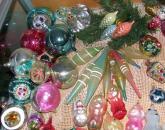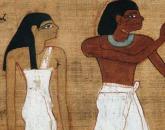All about alcoholic drinks for the Christmas holidays. Drinks for the Christmas holidays What kind of alcohol is customary to drink at Christmas?
New Year and Christmas are the times we spend with family and friends at the festive table, bursting with our favorite dishes and drinks. And what this festive feast will be like depends largely on the country in which we are located. Every culture has its own traditional Christmas dishes and drinks that must be on the holiday table.
And of course, not a single New Year's holiday is complete without wine or beer. However, some countries prefer mainly (or exclusively) seasonal drinks during New Year's holidays. For example, creamy eggnog is a favorite drink of Americans and Canadians, and a similar cream-based drink is also consumed in Latin America, including Puerto Rico, Chile and Mexico.
In Scandinavia, Sweden and Finland, glogg or hot wine (also known as mulled wine) is especially popular and is drunk throughout December. There are quite a lot of varieties of hot wine in European countries, and they are all made on the basis of red wine, only the spices change. Traditional German mulled wine is basically the same alcoholic glogg, only without the addition of raisins and almonds.
And if you celebrate the New Year in Jamaica, then forget about the warming drinks typical of winter. The Jamaican Christmas drink is made from hibiscus petals, locally called sorrel, along with sugar, fresh ginger, lime juice and dark rum.
Mulled wine or gluwein – Germany, Austria
Mulled wine or hot wine is a popular warming drink in Germany and Austria, made from red wine with the addition of various spices: cinnamon, cardamom, ginger and bitter orange. However, additives may vary depending on the country and the personal preferences of the cook.
Wassailor Christmas punch - UK

The British Yuletide tradition of going from house to house singing carols and wishing for good health dates back to the 1400s. Yuletide celebrations also include drinking ale-based hot cider, and the name Wassail means "bless you" in Old English. And although the Christmas tradition is already outdated, this drink is still relevant for England (especially when raising a toast to health).
Cola de Mono – Chile

Literally, cola de mono means “monkey tail.” This Chilean drink resembles eggnog and is drunk cold. The creamy mixture is made from Chilean aguardiente vodka (sometimes replaced with rum or brandy), milk, coffee, nutmeg, vanilla, cinnamon and cloves.
Glogg – Scandinavia
Glogg is the Scandinavian version of German mulled wine. In Sweden and Finland, this drink can be either alcoholic, made from red wine, or non-alcoholic, made from black currants and grape juice. Glogg is served hot; cinnamon, cloves, orange, a pinch of raisins and almonds are used as additives.
Eggnog – USA, Canada

It is not known for certain who exactly invented this drink, but the fact remains true that it is a favorite cocktail in the USA and Canada. The combination of milk, eggs and sugar with bourbon, rum, brandy, as well as any alcoholic drink for every taste is a very rich treat for the holiday table.
Navideño Punch – Mexico

If you are lucky enough to celebrate the New Year in Mexico, then be sure to try the hot punch - Ponche Navideño, which is often sold right on the street. Probably doesn't exist the right recipe its preparation, but it is known for sure that the drink includes a mix of sugar cane, apples, pears, citrus fruits, raisins, prunes and Mexican hawthorn (a local fruit known since the times of the Aztecs). For adults, tequila, cognac and rum are added to the punch.
Fruit Punch – Guatemala

As in Mexico, Guatemalan New Year is celebrated with a glass of punch. Traditionally, on Christmas Eve, Guatemalans enjoy noche buena - a fruit punch made from a huge amount of fruits and dried fruits, such as raisins, prunes, dried apricots, apples, pineapple, papaya, as well as spices - cinnamon, cloves, allspice and zest. orange If you want something stronger, add rum to the drink.
Poppy milk – Lithuania

In Lithuania, traditionally, the New Year's drink is made from poppy seeds. It looks like almond milk and contains ingredients such as poppy seeds, water and honey. Milk of the poppy (lit. aguonų pienas) is one of the 12 Lithuanian Christmas dishes.
Coquito - Puerto Rico

There are many ways to make coquito, but basically this ingredient-rich Christmas drink (Puerto Rican eggnog) is made with spiced rum, condensed milk, coconut milk, coconut cream, vanilla, cloves, nutmeg and cinnamon. Creamy coquito is served chilled.
Sorrel Punch – Jamaica

Christmas in Jamaica means sun, sea and beach - no warm drinks required. Instead, sorrel punch is served at Christmas, made from hibiscus (sorrel) leaves, sugar, fresh ginger, lime juice and rum. It is worth noting that Jamaican native sorrel is not the bitter green plant we are accustomed to.
The most common agricultural crop in the world is grapes. Up to 8 million hectares are planted with them annually. The reason grapes are so popular is that they are one of the main products for making wine.
Wine and antiquity
Wine is one of the first important components of human history. In ancient times, wine was considered an international currency and was valued at the same level as silver and gold. They traded slaves for it and bought weapons.
Wine was an obligatory attribute of the ancient Greek “symposiums,” that is, meetings where “wise men” gathered for philosophical conversations. The Hellenes drank wine diluted to enjoy and be in good shape, and not to get drunk. Drinking undiluted wine among the Greeks was considered the act of a barbarian.
When consumed in moderation, wine, especially red wine, increases life expectancy by preventing the formation of blood clots and the associated blockage of blood vessels. And therefore, it protects against Alzheimer’s disease, reduces the risk of stroke and heart attack and even cancer.
All these miraculous properties of wine are determined by the presence of natural phytoalexin in it - resveratrol. However, if you don’t drink wine, don’t worry. Resveratrol is found not only in red wine, but also in peanuts, red grapes and blueberries.
In addition, rinsing with wine protects your gums as well as toothpaste, and a small dose helps relieve stress and overcome depression.
Interestingly, the French, considered one of the most wine-drinking nations in the world, are among the leaders in (81 years), ahead of all other developed countries. European countries. By the way, in France you are allowed to drive if you drink no more than two glasses of wine. However, you must have at least 2 years of driving experience.
How to distinguish fake wine from real one
All the above-described aesthetic and physiological joys of drinking wine take place only if you drink a quality drink. Unfortunately, despite the huge amount of grapes grown on Earth, even more “grape” wine is produced. It is believed that approximately 30% of the range of this drink available on the market is, to one degree or another, counterfeit.
The simplest test to check the quality of wine at home: Pour a spoonful of baking soda into a transparent glass of wine. If the wine turns blue, it means it is natural. Synthetic products do not turn blue.
You can also do this. We fill a bottle with wine and immerse it in a vessel with water, closing the neck of the bottle with a finger. Place the bottle in the water, neck down, and release your finger. If the wine quickly mixes with water, it means it is not natural.
It is advisable to buy wine in branded stores, giving preference to well-known and not cheap brands. Vintage wine is bottled only in dark glass bottles. The cork should be strong, not crumbly and without signs of mold.
There is an opinion that wine must be aged. In fact, ordinary wine does not last long. Over time, it sours and turns into vinegar. Wines that, thanks to special technologies, can be stored for 25 to 100 years are very expensive.
Invinoveritas
This Latin aphorism is attributed to Pliny the Elder, the same one on whose behalf the narrative is told in Joseph Brodsky’s poetic masterpiece “Letters to a Roman Friend.”
However, this expression sounds like this in full: “ Invinoveritas,inaquasanitas", which translates quite unexpectedly as “truth is in wine, but health is in water.”
For some reason, it is not customary for us to pay special attention to the holiday menu when preparing for the winter Orthodox holidays. But everyone Orthodox holiday involves serving very specific dishes, many of whose recipes are lost, which also applies to aromatic Christmas drinks. Prepare a ritual pie and serve it with hot tea or an uzvar of dried fruits or something more intoxicating - wouldn’t such a treat be memorable?
The symbolic drink of the New Year is a bottle of champagne! How can you celebrate the New Year without a glass of sparkling wine? What traditional drinks should you celebrate Christmas with?
Perhaps all people associate Christmas with something bright, snowy, and frosty. Christmas tales, Christmas films - full of miracles and kindness!
And what could be more pleasant than wrapping yourself in a plush blanket, watching a delightful good movie - or reading a book - and slowly, with pleasure, sipping hot, aromatic Christmas drinks? Or sit at the festive table with your loved ones and enjoy the smells of red wine and cinnamon?
Uzvar
Uzvar is a cool drink, however, it is customary to prepare it on church holidays– including at Christmas. Uzvar is an almost ritual drink, which is usually served on Christmas Eve.
Ingredients for uzvar can be found in almost every home. Dried apples, pears, black raisins and honey are mandatory. And then you can add cinnamon, orange or lemon zest, or the juice of these citrus fruits if you wish.

The difference between uzvar and compote is that it does not need to be boiled - just bring it to a boil and turn it off. Dried fruits are added to boiling water in a strictly defined order: first apples, five minutes later pears, and then raisins and other ingredients. The drink is brought to a boil and only after it has cooled to 30-40 degrees, honey is added to it.
The finished uzvar is served only chilled.
The favorite alcoholic drink in Rus' was, of course, mead. Whatever the celebration is, it’s on the table with her! So why don’t we create this wonderful drink and treat our loved ones to the Christmas table?
True, you need to start preparing in advance - two weeks before the holiday. But mead will fit perfectly into the list of Christmas drinks - not too strong, aromatic, tasty, easy to drink - and can be heated before serving if the day is frosty.

The ingredients are simple and accessible to almost everyone: honey, hop cones, spices (the same as for mulled wine) and yeast. And two weeks of patience - until the mead stops playing and settles.
- Add honey to boiling water and boil for a couple of minutes, then add hop cones and spices.
- Cover with a lid and let the infusion cool to a temperature of 30-35 degrees, and only then pour regular or brewer’s yeast into it.
- The honey mass should ferment at room temperature for five days.
- Then we remove the hop cones from it and skim off the foam, and leave the mead to ripen for another five days.
The aroma in the house is indescribable!
Great ideas from around the world
In Europe and the United States, Christmas is one of the greatest and most beloved holidays.
Brightly decorated houses, shining Christmas trees, stockings with gifts, Santa Clauses, baked turkeys and, of course, delicious traditional alcoholic drinks that warm the soul and body and bring romance and comfort to family gatherings.
The most famous nectar of Christmas is mulled wine. Ideally, it is made with red wine – always dry! For those who find it difficult or don’t want to look for ingredients for mulled wine, in every supermarket on the spice shelf there are bags with a set of spices specifically for this drink.
The ingredients of mulled wine may vary depending on the taste preferences of its creator, but, as a rule, it is cinnamon (not ground - with sticks), cloves, dried lemon and orange zest.
You can add raisins, honey, nutmeg, cardamom, sugar - regular or cane. In any case, a drink that contains dry wine and cinnamon will not leave any adult indifferent!

- The wine must be heated to ninety degrees in an enamel pan (make sure that the wine does not boil!), then add all the spices to it.
- Cover the nectar with a lid and leave for a quarter of an hour.
Serve in special mulled wine mugs.
The next wonderful drink is punch! There are such variations of it large number, that even listing them would take a lot of time.
It can be hot and cold, alcoholic (strong and weak) and non-alcoholic... And the number of possible ingredients is simply incalculable - wine, vodka, brandy, rum, black tea, sugar, lemon, orange juice, clove buds, cinnamon sticks, pieces fruits and much, much more.
Punch has its own rational feature: its variations without alcohol can be prepared for children, which will certainly delight them!

The most popular alcoholic punch is made from 2 parts tea, 1 part rum and additives such as lemon juice, honey and cinnamon.
- Rum, honey, lemon juice and spices are added to hot tea and the punch is left on low heat for about 15-20 minutes.
It can be consumed immediately or chilled. Non-alcoholic punch is prepared in the same way, only the rum should be replaced with any fruit juice.
Grog
Another nectar of Christmas is grog. Spontaneously invented by English sailors in the mid-16th century, grog was brought to Russia three centuries later and was immediately liked and firmly established.

Classic grog is a mixture of rum and boiling water. But why not refine the alcohol before serving?
- Water and rum are taken in a one to one ratio.
- Add sugar, lemon with peel or its zest, orange zest, the same cinnamon and cloves.
- The drink is prepared in just a few minutes – you just need to boil it – and then it’s served right away!
Whether it’s grog, tea, cognac with dried fruits - no matter what drinks are on the Christmas table, the main thing is that they create a cozy, harmonious atmosphere in the house, give a reason to stay longer with your loved ones and spend a pleasant day or evening with calm, confidential conversations.
Christmas holidays cannot be imagined without traditional champagne and other alcoholic drinks that maintain mood at the proper level. However, choosing the right alcohol for the upcoming holidays is a whole science, which we will try to comprehend.
The most popular New Year's drinks in Russia
Let's start with the classic drinks that you can buy at the WineStreet store:
- wine. This drink takes an honorable second place, immediately following champagne. Most often, Russians prefer semi-dry red or dry white wines;
- vodka. Another indispensable attribute of any holiday table;
- liquor. Fruit liqueurs are very popular (especially in the West). In the vastness of Russia, preference is given to Baileys and other cream drinks;
- martini and cognac shared the 4th place of the most popular alcohol in New Year. Martini is preferred by the female audience, and cognac by the male audience;
- ranked fifth in popularity brandy .
The main advice that can be given to those who are planning festive table, — there is no such thing as too little alcohol. Especially if you are expecting a large number of guests, it would be a good idea to buy a bottle of each type of alcohol, because you never know what exactly this or that person prefers.

Foreign practice
The foreign culture of selecting alcoholic drinks for Christmas and New Year is different from ours. There, strong alcohol is allowed only during the New Year celebration itself. During the Christmas holidays, preference is given to hot alcoholic drinks.
Let's start with the UK. Wassail, otherwise known as Christmas punch, is especially popular here. The drink is prepared on the basis of cider and ale. In this case, pieces of apples may float inside the liquid. It is believed that it is in this consistency that punch is more useful.
In Scandinavia, during Christmas, no home can do without glogg, the traditional drink of this territory. Glogg can be made based on red wine or blackcurrant juice. The latter option is non-alcoholic and intended for children. Residents of Scandinavian countries love glogg for its diverse taste, including the smells of cinnamon and cloves, the aromas of orange and almond.
The USA and Canada have their own favorite hot cocktail, based on:
- milk;
- bourbon, rum and brandy.
All this is generously sugared and heated to a comfortable temperature.
Finally, another traditional Christmas drink that cannot be ignored is sorrel punch, which is widespread in Jamaica. In his classic recipe includes hibiscus, sugar, ginger, lime juice and rum. The drink itself has a bitter aftertaste, which not everyone will like.

How to combine drinks correctly and forget about headaches in the morning?
This question is one of the most pressing, because the holidays last a long time, and there are a lot of different alcohols on the table, each of which you want to try.
There are only 2 rules to avoid unpleasant sensations in the morning:
- Mix alcoholic drinks correctly.
The last point is worth dwelling on in more detail.

We are used to drinking champagne while waiting for the chimes to strike, and then moving on to vodka. This approach is incorrect, because vodka does not go well with wines (including sparkling wines). The table will help you understand the features of selecting the right alcohol pairs:
Knowing about this feature of combinations, you will be able to choose those alcoholic drinks that will delight you with variety and will not cause a headache in the morning due to incompatibility with each other. You don’t have to worry about the quality of drinks, because when buying alcohol in the WineStreet store, you are making a choice in favor of a certified product.
Popular
- DIY festive hairstyle
- Making charming baskets from newspaper tubes using a cardboard box
- Kiss tattoo for men. Kiss tattoo. The meaning of tattoos for men
- The safety of plastic toys
- Winter safety shoes: men's and women's, insulated
- Increased protein in urine: possible causes and treatment Quantitative methods of assessment
- We knit booties with knitting needles: elegant and casual patterns, patterns with descriptions and recommendations
- How is World Heart Day celebrated?
- Knitted children's pullover with cat applique
- You need to know this: how to get a ticket to kindergarten - step-by-step instructions for parents




